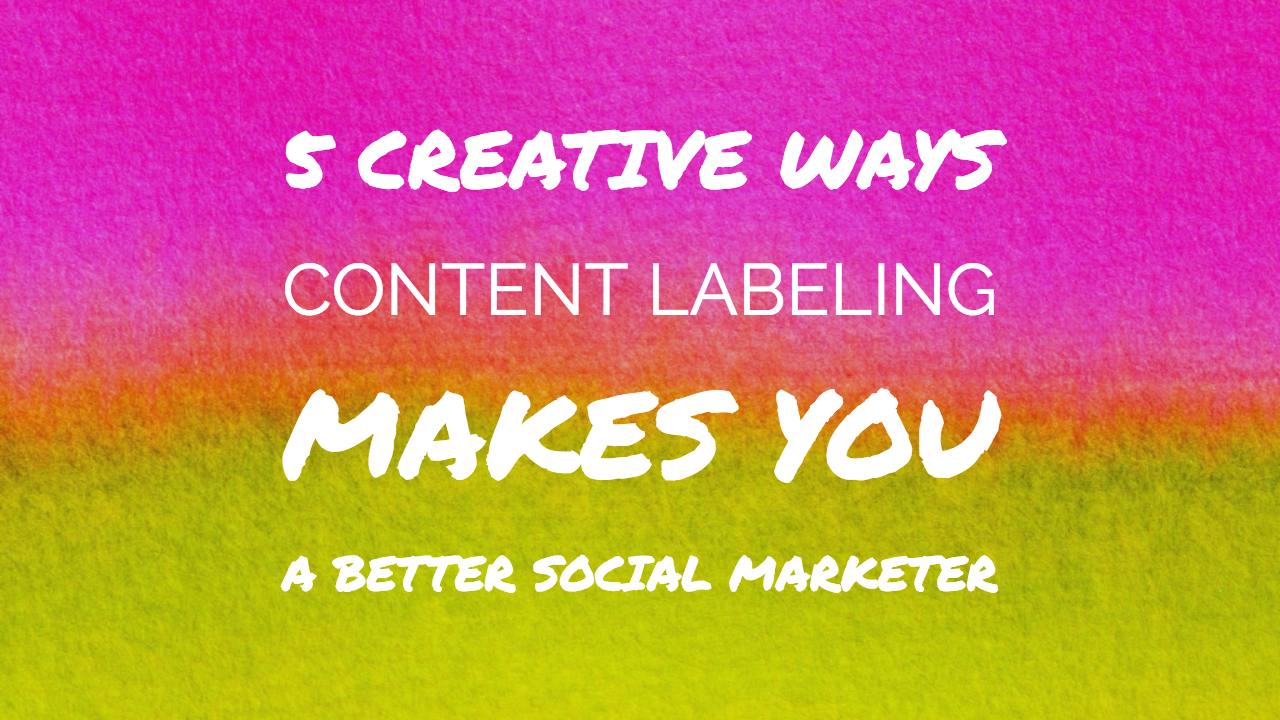
5 Creative Ways Content Labeling Can Make You a Better Social Marketer
Two weeks ago, we published an introduction to content labeling, explaining why it is such a crucial piece of the social analytics puzzle. Content labeling is an easy way to group and segment owned, competitive, and influencer posts. Why would you want to do that? So you can analyze particular pieces of your strategy and get really granular and official about what works for your brand.
10 Social Lessons from Instagram Innovators
As a product marketer, I spend a lot of time in the weeds with our customers, learning more about the creative ways they use our tools. Customers constantly amaze me with the creative ways they use content labeling. Below are the five most powerful ways I’ve seen content labeling used.
1. Owned Campaign Benchmarking
One of the most common ways our customers use content labeling is to track the performance of a given campaign on a deeper level, so they can generate insights that are actionable next time around.

One travel client used content labeling to report on the success of their 2017 holiday campaign, they and wanted to give more context about the strides they had made over the past year. The client labeled their holiday posts from 2017, as well as the posts from 2016. By viewing 2017’s success side-by-side with 2016, the team was able to show common themes, reactions, and growth to management—and gain insight for their 2018 campaign.
2. Influencer Tracking
Influencer tracking is one of the most important use cases for content labeling. Trying to isolate the posts that someone publishes on your behalf can add huge amounts of time to your reporting process.

Labeling these posts saves our clients time and helps them get a sense for the return they get from each influencer. One client took it a step further and compared all of their influencers to see which ones were worth the money and which ones they should drop.
3. Competitive Analysis
Content labeling enables you to get specific with how you stack up against your competitors. While overall benchmarking is a key part of any social analysis, it is equally important to understand how your competitors package content around certain products, campaigns, or services.

One of our clients in the tech space recently released a new product and wanted to compare their product’s social performance to a similar product produced by a competitor. The team labeled content centered on their key product and used the same label for their competitor’s content about the competing product. By comparing one product’s performance against another, the client understood their own performance, their competitor’s performance, and exactly what content resonates best for their shared audience.
4. Demographic Analysis
Many of our customers use content labeling to understand how their content is resonating with different markets.

A bank, for example, wanted to target a younger demographic and started creating posts about getting a home loan and ways to refinance student loans. Their team used content labeling to segment out those posts and compare performance to those of their posts targeting an older demographic.
5. CTA Analysis
One of the finest lines we walk as marketers is the balance between sales and community building. We want spaces to be relevant and inviting, but, at the end of the day, our organizations need to sell something to survive.
Content labeling can help you test various CTAs and ways of packaging CTAs to see which posts or groupings of posts drive the most the most business value. As an example, we can check out the three images below from Under Armour’s recent release of clothing from everyone’s favorite: Dwayne “The Rock” Johnson. We could easily compare the more direct “shop now” to the softer “Get closer to your dreams” CTA. Which drives more clicks over time?
 If you want to learn more about how brands in your industry use content labeling, or want to check it out for yourself, request a personalized demo below.
If you want to learn more about how brands in your industry use content labeling, or want to check it out for yourself, request a personalized demo below.





